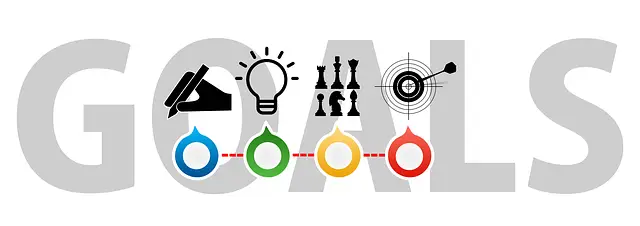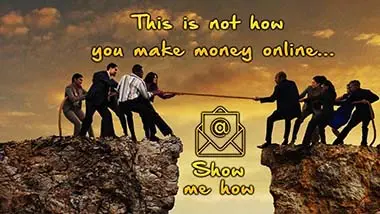
Understanding the Importance of Goal Setting
Goal setting is a fundamental process critical to personal and professional growth. It acts as a roadmap, guiding individuals toward their desired outcomes. When people articulate their goals, they create a clear direction that enhances motivation and focus. A well-defined goal is a target to aim for and facilitates efficient time management and resource allocation.
Psychologically, setting goals offers several benefits that contribute to overall well-being. For instance, setting specific, measurable objectives fosters a sense of achievement and satisfaction when milestones are reached. This feeling of accomplishment reinforces positive behavior, encouraging individuals to pursue further challenges. Moreover, having a clear
set of goals allows one to break down larger ambitions into manageable tasks, thus reducing the feeling of being overwhelmed. The incremental progress achieved enhances self-esteem and promotes a proactive mindset.Additionally, clear goals are instrumental in measuring progress. While pursuing objectives, individuals can monitor their advancements, evaluate their strategies, and make adjustments when necessary. This ongoing reflection cultivates a sense of accountability, as individuals are more inclined to remain committed when they have set expectations to meet. In both personal and professional contexts, accountability fosters responsibility and encourages individuals to push their limits, often resulting in higher performance.
In summary, understanding the significance of goal setting is essential for anyone looking to elevate their life circumstances. The benefits extend beyond achieving mere targets; they encompass the psychological, motivational, and strategic elements that facilitate sustained growth. By acknowledging and utilizing the power of goal setting, individuals can significantly enhance their chances of success, driving them to turn aspirations into attainable realities.
Differentiating Between Realistic and Bold Goals
Setting goals is fundamental to personal and professional development, but not all goals are equal. Individuals often pursue two primary categories of goals: realistic and bold. Understanding the distinction between these types of goals is crucial for effective planning and motivation.
Realistic goals can be achieved within a specific timeframe, considering one’s current resources, circumstances, and capabilities. These goals are often quantifiable and follow the SMART criteria—Specific, Measurable, Achievable, Relevant, and Time-bound. For instance, a realistic goal could be to complete a project by a specific deadline or to enhance a skill through a structured course. The defining characteristic of realistic goals is their foundation in practicality; they encourage steady progress and make it easier to maintain motivation while minimizing frustration.
In contrast, bold goals push the boundaries of what seems achievable and often involve a degree of risk. They are ambitious and sometimes stretch beyond immediate capabilities. A bold goal might include launching a groundbreaking innovation, pursuing a significant promotion, or starting a new venture that requires investment and initiative. What sets bold goals apart is their capacity to inspire and challenge individuals to reach beyond their comfort zones, leading to personal growth and a higher level of achievement.
 Don’t keep this gem to yourself! Imagine the ripple effect when your post shines brightly, reaching and inspiring the audience it was meant for. By sharing it, you’re not just spreading a message; you’re creating a wave of positivity and connection that could change someone’s day—or even their life. Let’s amplify its impact together—will you share it and let it sparkle in the spotlight?
Don’t keep this gem to yourself! Imagine the ripple effect when your post shines brightly, reaching and inspiring the audience it was meant for. By sharing it, you’re not just spreading a message; you’re creating a wave of positivity and connection that could change someone’s day—or even their life. Let’s amplify its impact together—will you share it and let it sparkle in the spotlight?Finding a balance between realistic and bold goals is essential for sustainable progress. Setting exclusively realistic goals may lead to complacency, while focusing solely on bold goals can result in disappointment if deemed unattainable. Striking a balance allows individuals to pursue ambitious objectives while remaining grounded in reality, fostering a growth-oriented mindset while ensuring that expectations are manageable. This dual approach enhances goal achievement and cultivates resilience by acknowledging challenges and capabilities.
The SMART Criteria for Goal Setting
Setting goals is a fundamental aspect of personal and professional development. A widely recognized framework for practical goal setting is the SMART criteria, which stands for Specific, Measurable, Achievable, Relevant, and Time-bound. This approach allows individuals and organizations to create clear, actionable objectives that drive progress and accountability.
To begin with, a goal needs to be Specific. This means it should be well-defined and unambiguous. Instead of stating a vague goal like “improve marketing,” a specific goal would be “increase the social media engagement rate by 20%.” Such clarity helps understand the objective and streamlines the efforts toward achieving it.
The next component is Measurable, which defines how progress will be tracked and assessed. Measurement creates a benchmark for success. This can include metrics such as time, quantity, or frequency. For the previous example, focusing on a 20% increase provides a quantifiable target, enabling a more straightforward measurement of success over time.
Achievable goals take into account the reality of the situation and available resources. While it is essential to remain ambitious, setting goals that are within reach encourages commitment and prevents feelings of discouragement. Therefore, when applying the SMART criteria, challenging yet reasonable targets must be the aim.
Relevance ensures that the goals align with broader objectives and personal values. Ensuring that the goals set contribute positively to one’s larger vision or mission is crucial. Finally, Time-bound sets a deadline, creating urgency and a structured timeline. A goal, such as increasing social media engagement by 20% within six months, affirms a finite period to attain the objective.
By applying the SMART criteria, individuals can establish goals that are clear, practical, and strategically aligned with their aspirations. This robust framework enhances the effectiveness of goal setting and fosters a proactive approach to personal and professional growth.
Assessing Personal Values and Long-term Vision
Aligning goals with personal values and long-term vision is crucial for creating achievable yet ambitious objectives. When individuals clarify their core values, they gain insight into what truly matters to them, fostering a sense of purpose that fuels their motivation. Core values can encompass various aspects such as integrity, family, community involvement, and personal growth. To identify these values, one may reflect on pivotal life experiences or consider one’s aspirations. Journaling or engaging in discussions with trusted friends can also assist in uncovering these fundamental beliefs.
Once core values are assessed, envisioning an ideal future becomes the next vital step. This long-term vision provides a goal-setting roadmap and helps make decisions that align with personal aspirations. Imagining where one wants to be in five, ten, or even twenty years allows identifying key milestones necessary for achieving that vision. Visualization techniques can be beneficial; for instance, creating a vision board or engaging in guided imagery can enable individuals to paint a vivid picture of their desired future, making that vision more tangible.
Additionally, it’s essential to understand that personal values and long-term vision often evolve. Regularly revisiting and reassessing these elements ensures that goals remain relevant and motivating. Life changes, such as career shifts, relationships, or personal experiences, might necessitate updates to one’s values and vision. Establishing a practice of self-reflection can aid in recognizing these shifts and realigning goals accordingly. By carefully considering personal values and envisioning a future that is both bold and realistic, individuals position themselves to create meaningful goals that resonate profoundly and inspire action.
Breaking Down Goals into Manageable Steps

Setting bold and realistic goals can often feel daunting, especially when faced with the enormity of the task. It is crucial to break down larger aspirations into smaller, manageable steps to mitigate feelings of being overwhelmed. This incremental approach makes the goal seem more achievable and provides a clear framework for progress. By dividing a significant goal into smaller components, individuals can foster a sense of accomplishment as each step is completed. This, in turn, can motivate further action and sustain momentum toward the overall objective.
When creating an action plan, it is important to outline specific tasks associated with each step. Begin by identifying the end goal and reverse-engineering the process to determine what smaller tasks need to be accomplished. For instance, if the overarching goal is to launch a new product, the initial steps might involve market research, identifying the target audience, and developing a prototype. Each task can be further broken down; for example, market research can include surveys, interviews, or data analysis. By detailing each task within an action plan, progress can be tracked effectively, making the process less overwhelming.
Moreover, it is beneficial to establish timelines for each of these smaller tasks. Setting realistic deadlines can help maintain focus and prevent procrastination. Additionally, using tools such as calendars or project management software can enhance organization, allowing for seamless coordination of tasks and deadlines. .
Establishing a Timeline for Your Goals
Setting a realistic timeline for your goals is crucial in turning ambitions into achievable outcomes. A well-structured timeline provides direction and establishes a sense of urgency that can motivate you to take action. When developing your goal timeline, it is essential to balance ambition and reality. This means creating deadlines that challenge you without causing undue pressure, which can lead to burnout or discouragement.
Start by identifying the specific goal you wish to achieve and breaking it down into smaller, manageable tasks. Each task should be assigned a deadline reflecting its complexity and available resources. Consider employing the SMART criteria—specific, Measurable, Achievable, Relevant, and Time-bound—to ensure the timeline is practical. By segmenting your goal into milestones, you can monitor your progress effectively, making it easier to adjust your plans as necessary.
Moreover, it is essential to remain flexible throughout this process. Life often presents unforeseen challenges; adapting your timeline is crucial for maintaining motivation. When setting deadlines, include buffer periods for each milestone, allowing you to accommodate delays without derailing your overall progress. Additionally, regular check-ins can help you assess whether you are on track, enabling you to make informed adjustments to your strategy as needed.
Incorporating key milestones into your timeline facilitates progress tracking and celebrates your achievements along the way. Recognize these accomplishments, regardless of their scale, as they contribute to the larger goal. Ultimately, a thoughtful timeline serves as a roadmap for your aspirations, helping you stay focused, organized, and committed to reaching your objectives.
Staying Flexible and Adjusting Goals as Needed
Setting goals is an essential component of personal and professional growth. However, it is crucial to understand that flexibility plays a vital role in achieving those goals. Life circumstances can change unexpectedly due to numerous factors, including economic shifts, personal relationships, health issues, or new opportunities. It is essential to embrace the idea that goals should not be set in stone but rather serve as dynamic targets that can adapt to one’s evolving situation.
Being open to adjusting goals allows individuals to maintain relevance in their pursuits. For instance, if an ambitious objective becomes unattainable due to unforeseen circumstances, it is detrimental to remain overly rigid. Instead, one should reassess their current environment and determine if the existing objectives align with their newfound reality. This may entail scaling or redefining specific ambitions to accommodate the current situation without dismissing the overall dreams and aspirations.
Strategies for reassessing goals include regular check-ins with oneself to evaluate progress and challenges faced along the way. These reflective moments can provide insight into what is working and what isn’t, allowing for necessary adjustments. Furthermore, seeking feedback from mentors, peers, or trusted individuals can offer fresh perspectives that might illuminate possible pathways for modification. It is also beneficial to maintain a journal to chronicle the journey towards goal completion, which can highlight achievements and lessons learned through trying times.
Ultimately, the key to effective goal-setting lies in balancing ambition and adaptability. By cultivating a mindset that welcomes change and is willing to adjust objectives as needed, individuals can ensure that their goals remain achievable and inspiring, echoing their overarching vision while accommodating the fluid nature of life.
The Role of Accountability and Support Systems
When setting realistic yet bold goals, the role of accountability and support systems cannot be overstated. Establishing accountability plays a crucial part in ensuring that individuals remain committed to their goals. One effective method to foster accountability is sharing values, aspirations, and specific objectives with trusted friends, family members, or mentors. This practice not only serves to inform others about one’s ambitions but also encourages a sense of responsibility. When you vocalize your goals, it becomes more challenging to deviate from them, as you have effectively created an informal form of commitment.
Regular check-ins are another strategic way to reinforce accountability. Setting up weekly or monthly meetings with a colleague or mentor allows one to review progress, assess challenges, and strategize possible solutions. During these sessions, individuals can discuss any obstacles hindering their advancement and celebrate the small victories contributing to their success. Such interactions solidify accountability and enable individuals to seek guidance and advice, making the journey toward their goals more manageable.
In addition to accountability, having a robust support system is imperative. This network can include friends, family, colleagues, or even online communities where individuals share similar ambitions. The presence of a support system fosters motivation and encouragement, helping individuals stay focused. When challenges arise, having someone to share experiences with or offer advice to can significantly ease the burden, making it less daunting. Furthermore, support systems can serve as a source of inspiration, as collective experiences often highlight new strategies and perspectives that could be beneficial for achieving goals.
Ultimately, the combined effect of accountability and a supportive environment creates a solid foundation for pursuing one’s goals, enhancing motivation and resilience.
Celebrating Achievements and Learning from Setbacks
Recognizing and celebrating achievements, no matter how small, is essential in attaining goals. Each milestone motivates, boosting morale and reinforcing a sense of purpose. Celebrations can take various forms, ranging from personal acknowledgments to more public recognition. Taking the time to appreciate one’s progress helps reinforce positive behaviors and encourages individuals to stay committed to their objectives. By creating a habit of celebrating achievements, whether completing a project or reaching a personal target, individuals cultivate a positive association with their endeavors, promoting a constructive attitude towards future goals.
Conversely, setbacks are an inevitable part of any goal-setting process. When faced with challenges or failures, it is crucial to approach these experiences with an open mindset. Instead of viewing setbacks as discouragements, they should be seen as invaluable learning opportunities. Analyzing what went wrong and how to address these issues empowers individuals to refine their strategies. This reflective practice allows one to identify strengths and weaknesses, thus informing future actions.
Maintaining a positive mindset during challenging times is critical. Techniques such as mindfulness, journaling, and seeking support from peers can significantly contribute to resilience. Practicing gratitude and focusing on steps taken towards established goals, instead of solely on the outcome, underlines the importance of the journey. This shift in perspective fosters an environment where motivation can flourish, even when the path becomes difficult.
In conclusion, balancing the celebration of achievements with an understanding of setbacks fosters personal growth and development. Acknowledging successes fuels motivation, while viewing failures as learning experiences leads to greater resilience and adaptability. By embracing both aspects, individuals can sustain momentum towards achieving their goals. This dynamic approach ensures they remain engaged and committed, regardless of the obstacles.





